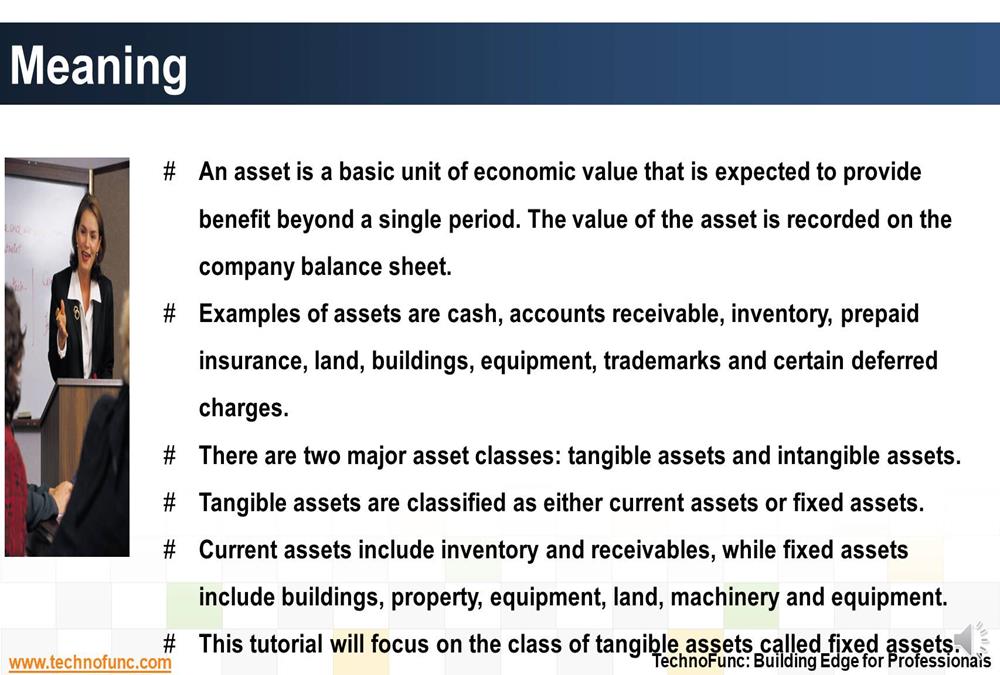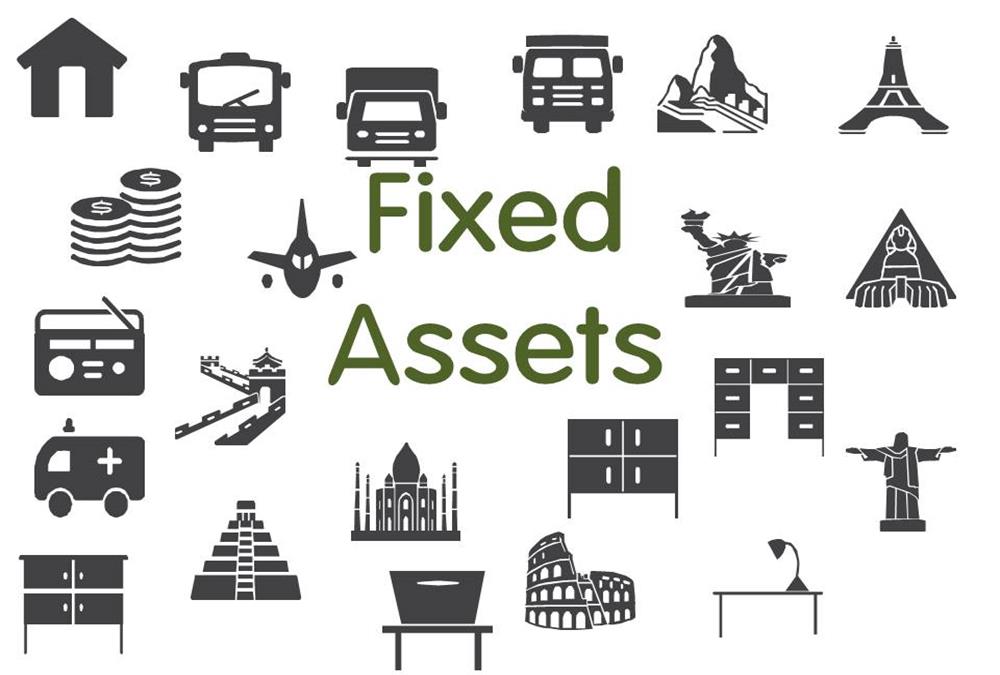- Home
- Business Processes
- Industry Knowledge
- Aerospace Industry
- Automotive Industry
- Banking Domain
- BFSI Industry
- Consumer/ FMCG Industry
- Chemicals Industry
- Engineering & Construction
- Energy Industry
- Education Domain
- Finance Domain
- Hospitality Domain
- Healthcare Industry
- Insurance Domain
- Retail Industry
- Travel and Tourism Domain
- Telecom Industry
- Leadership Skills
- eLearning
- Home
- Domain Knowledge
- Fixed Assets
- What are different assets
What are different assets
An asset is anything that will probably bring future economic benefit. Every company must take actions to safeguard, control, and manage the assets it owns. Cash Assets needs to be managed effectively to safeguard and utilize them efficiently. In this section, we will start with understanding what are assets, what are various classification of assets and then we will focus on Asset Management.
There are two major asset classes; tangible assets; and intangible assets. Tangible assets are classified as either; current assets, or fixed assets. Current assets include inventory and receivables, while the term ‘Fixed Assets’ generally refers to the long-term, tangible assets used in business including buildings, property, equipment, land, machinery, and equipment.
What are Assets:
According to the Financial Accounting Standards Board, assets are “probable future economic benefits obtained or controlled by a particular entity as a result of past transactions or events.”
According to “The Institute of Management Accountants” assets is “any owned physical object (tangible) or right (intangible) having economic value to its owners; an item or source of wealth with continuing benefits for future periods, expressed, for accounting purposes, in terms of its cost, or other value, such as current replacement cost. Future periods refer to the following year or years.”
An asset is anything that will probably bring future economic benefits. Every employee is responsible to follow policies and procedures to safeguard the company's assets.
Classification of Assets:
Assets are classified into two categories: tangible and intangible.
1. Tangible Assets:
Tangible assets are assets that one can touch, hold, or feel. Typically called fixed assets in accounting literature, tangible assets are the physical things that a business uses in the production of goods and services. They constitute the production facilities, buildings, equipment, and vehicles. These operational assets of a business include furniture, computers, and similar items not used up within a year.
2. Intangible Assets:
These are primarily financing items: stocks, bonds, mortgages, etc.
Current Assets:
Assets that are converted into cash during the normal production cycle are current. Current physical assets are referred to as financial assets. These are physical assets such as raw materials, work-in-progress inventories, finished goods, and goods held for resale.
Definition of Fixed Assets:
An asset is anything that will probably bring future economic benefits. Fixed assets are assets held for the purpose of providing or producing goods or services and are not meant for sale in the normal course of business. Therefore, an asset can be classified as a fixed asset or otherwise, depending upon the use to which it is put or intended to be put.
The term ‘Fixed Assets’ generally refers to the long-term, tangible assets used in business including buildings, property, equipment, land, machinery, and equipment. Fixed asset in bookkeeping describes something tangible that the business owns and that will be in the possession of the business for years to come. By their very nature, fixed assets are turned over much slower than current assets. Normally, fixed assets are carried over from year to year. The average unit of fixed assets is normally of relatively larger dollar value. Due to the high dollar value, their acquisition is more effectively controlled and assumes special significance where fixed assets are self-constructed.
Some examples of fixed assets are Property, Plant and Equipment (PP&E), Construction in Process (CIP), Vehicles, Tooling, Capitalized interest, Equipment leased to others (ELTO), and Capitalized software, etc.

Financial Assets V/s Fixed Assets:
Physical items can be financial assets, held in inventory, in one business, whereas in other businesses or applications they may be fixed assets. An example of such a financial asset would be real estate held in inventory by a real estate investment and sales organization or builder, which would be a fixed asset for everyone else. Equipment manufacturers have financial assets in finished goods or inventory held for sale, as well as plant and equipment that will be sold to other businesses. The inventory is a financial asset; when sold for use in a production line it becomes a fixed asset to the purchaser.
Related Links
Explore Our Free Training Articles or
Sign Up to Start With Our eLearning Courses

About Us
Learning
© 2023 TechnoFunc, All Rights Reserved
